Curious case of nucleocapsid encoding Plasmids colonizing Lab staff
An interesting paper bubbled up while I was searching for DNase I inhibitors. This documents a case of BSL2 lab staff triggering false positives for Nucleocapsid C19 RT-qPCR tests. Normally this would go unnoticed and be chalked up to one series of asymptomatic cases of C19 but these folks dug deeper. It appears the same lab was working with plasmids that encode the nucleocapsid gene of SARs-CoV-2 and this plasmid colonized the airways of a few lab staff.
You’ll notice the vector shares a lot of features we see in the vaccine plasmids; Kan and Amp resistance genes, CMV promoters driving nucleocapsid expression. It could be a research clone or a nucleocapsid vaccine reagent. Not a bad idea as spike isn’t the best protein to build immunity from due to its toxicity. The surprising result is the length of the colonization was weeks to months and no mention of antibiotic selection being used to maintain these plasmids for this long time frame.
This leads to one question if these colonized staff can spread these E.coli plasmids?
One household member was positive and non-symptomatic.
This subject was lost in follow up but the test was positive with a DNA only qPCR test which implies they were infected with plasmid not C19.
This was a small lab. Imagine a lab that needs to brew enough plasmid to make billions of doses seen with the Pfizer and Moderna manufacturing processes. In this case the colonized lab staff may infect their roommates with spike encoded plasmids. This would trigger RT-qPCR tests looking for spike. In these cases the patients would be positive for spike but negative for Nucleocapsid RT-qPCR. It is unclear if spike antigen tests would be positive as the study didn’t address that question. Its unlikely bacteria will translate mammalian mRNAs with Kozak consensus sequences but if those bacteria are engulfed into mammalian cells through bactofection, it is possible.
The surprising result is the prolonged colonization of E.coli or their plasmids in lab staff for weeks to months without any mention of antibiotic selection required to keep those plasmids selected for.
I spent over 4 years in labs brewing gobs of E.coli plasmids for the HGP and must have been colonized by plasmids coding for all parts of human, mouse, tetraodon, drosophila, and various fungal genomes. I’m still here and suspect this colonization is harmless but it does shed light on additional sources of noise in pandemic monitoring. The implications for plasmid contamination in the vaccines are unclear. This work didn’t test for E.coli gDNA so we don’t know if they were colonized by live E.coli or just the plasmid DNA. The long time frame of positivity leads the authors to assume there was live E.coli maintaining these plasmids.
How long does the vaccine DNA contamination last in vaccinated patients? Do the RNA-DNA hybrids stabilize these contaminants? Should manufacturers be testing their lab staff to see if they are infecting their employees with Spike plasmids and do these leak any spike protein expression through Bactofection of E.coli into mammalian cells?
With Warp Speed, we may never know.

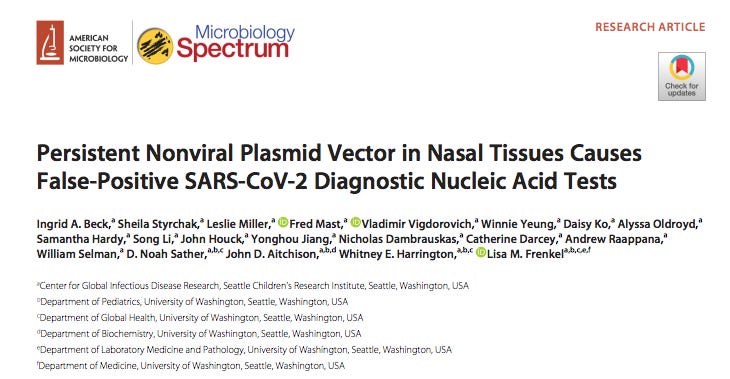
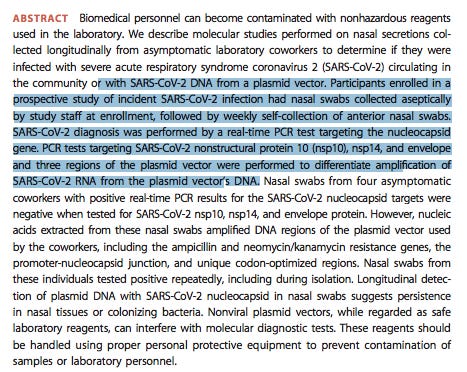

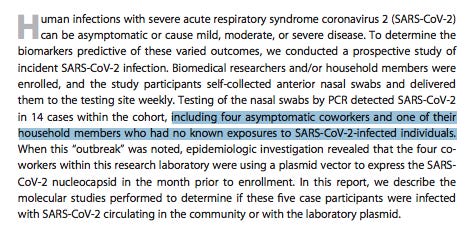
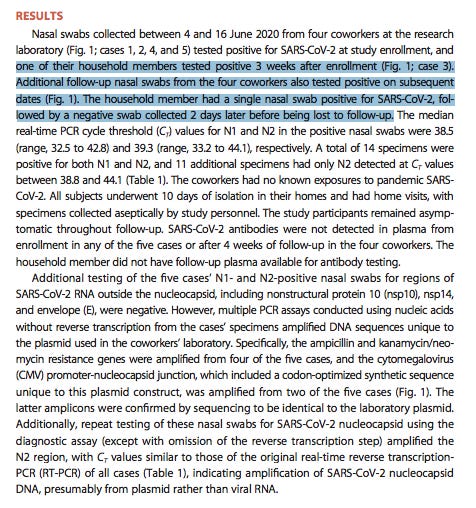
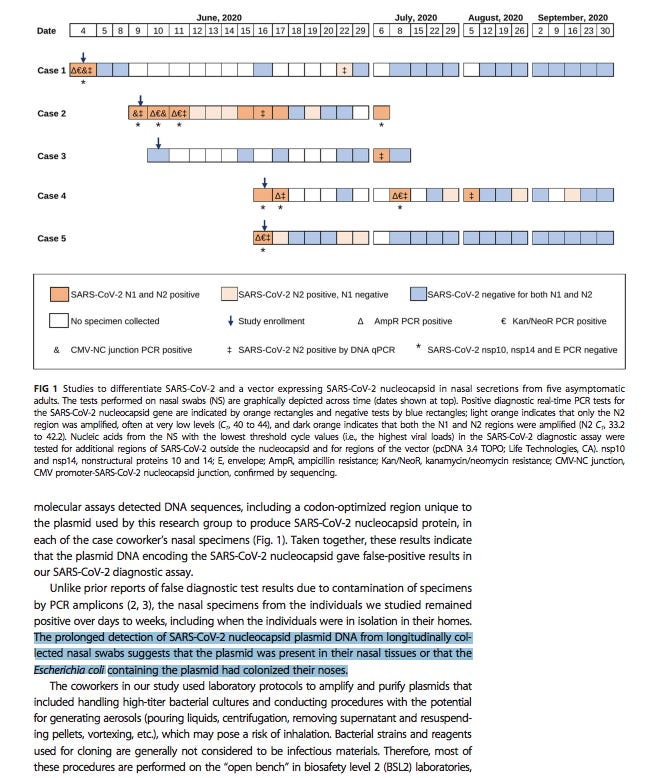
Nothing surprises me any more. Another question that needs to be asked is whether or not the people in this study should also be tested for plasmids as well? After all, what went into the eyes, could well have also gone in the nose:
https://pubmed.ncbi.nlm.nih.gov/35082653/
This is scary...